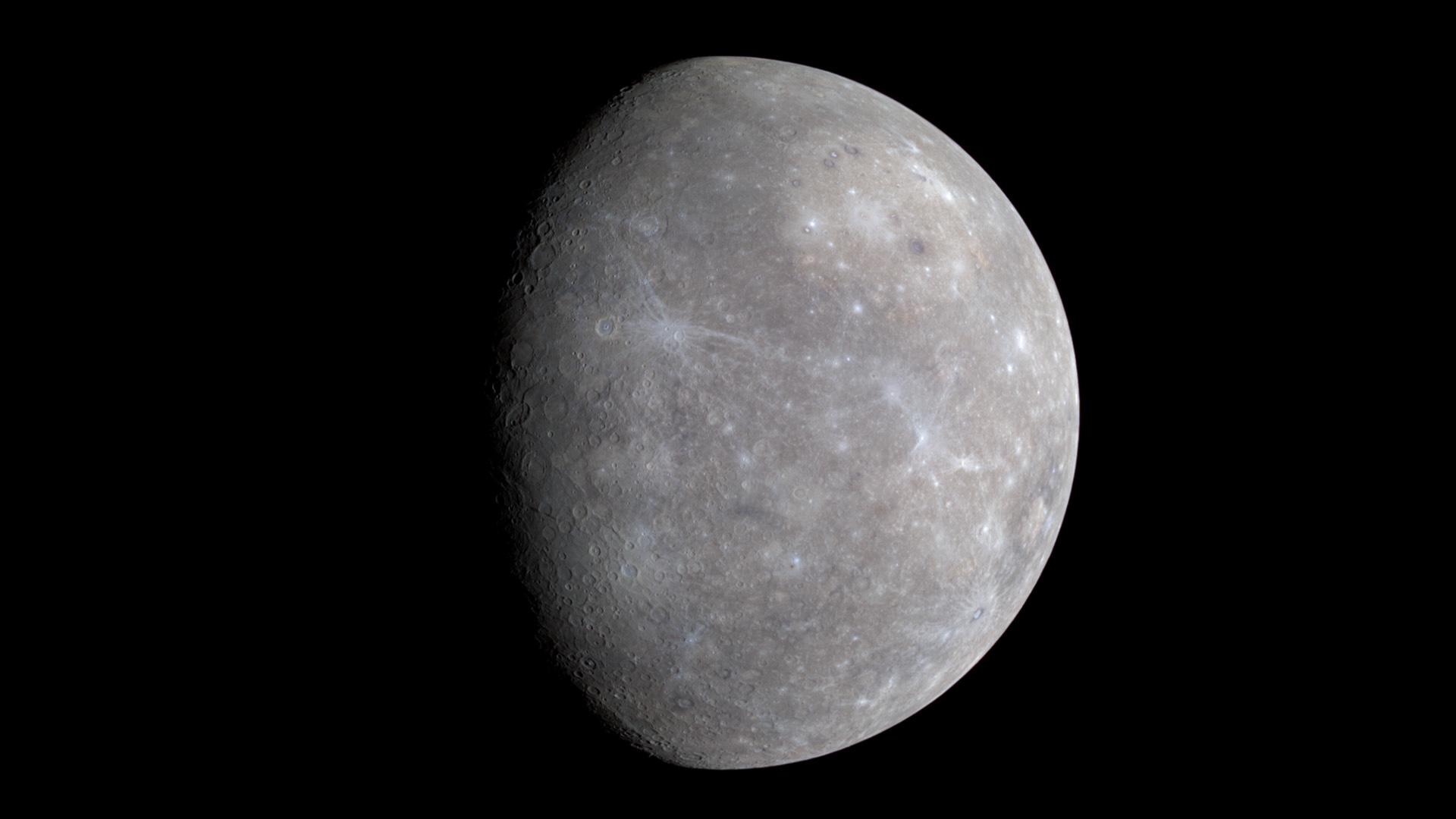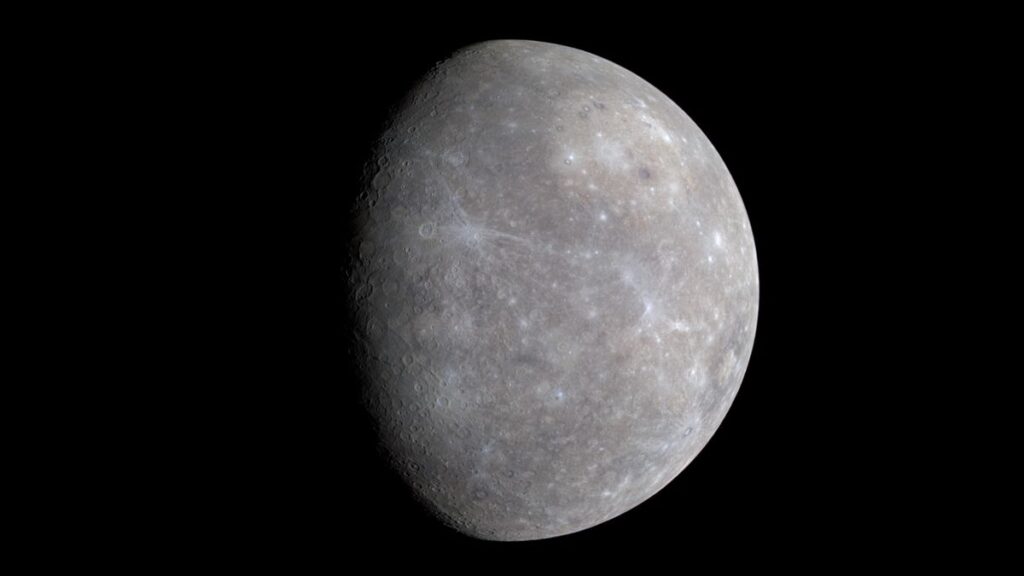
Mercury’s mysterious makeup may be the result of a grazing “hit and run” collision between two similar-sized protoplanets in the early solar system, a new study suggests.
Mercury, the smallest and innermost planet in our solar system, has a number of unusual characteristics that have long puzzled scientists. Despite being only slightly larger than Earth’s moon, Mercury is extraordinarily dense. It boasts a disproportionately large, iron-rich core that makes up about 60% of its mass — twice that of other rocky planets such as Earth, Venus or Mars — challenging commonly accepted theories of planetary formation.
Adding to the mystery, data from NASA’s MESSENGER probe, which orbited Mercury between 2011 and 2015, revealed that the planet’s surface is surprisingly rich in volatile elements, including potassium, sulfur and sodium. These elements should have been stripped away had the planet endured a rare, single, massive impact in its youth, as researchers previously theorized.
One possible explanation is that young Mercury violently collided with a much larger protoplanet. However, simulations tracing terrestrial planet formation indicate that collisions among protoplanets of very different sizes and masses are rare, prompting scientists to seek alternate explanations of how Mercury could have lost so much outer material while preserving these volatiles.
The new simulations suggest that Mercury’s anomalous makeup may stem from a more frequent cosmic event: a grazing collision with a protoplanet of comparable size.
“This kind of apparently ‘lucky shot’ would not have been unusual — and it might be exactly what created Mercury,” study lead author Patrick Franco, a postdoctoral researcher in astrophysics at the Paris Institute of Planetary Physics, told Live Science.
“Our work reinforces the idea that giant impacts are not just a part of planet formation — they may actually be the primary drivers shaping the final structure of planets in the solar system,” Franco said. The findings also raise questions about whether similar collisions could have shaped other planets, he added.
The researchers reported their findings March 4 in a paper posted to the preprint server arXiv, which is yet to be peer-reviewed.
“The timing of the impact is crucial”
The new simulations by Franco and his team successfully recreated Mercury’s current internal structure and chemical makeup through collisions between similarly sized protoplanets. Notably, the team found that the angle at which the collision occurred determined the amount of mass lost by the proto-Mercury, with certain “glancing” impact angles resulting in the young world losing just the right amount of mass needed to match its present-day composition.
“What surprised us, at the end, was how effective this type of impact could be in explaining Mercury’s unusual structure without needing to consider multiple collisions or extremely rare conditions,” Franco said.
The researchers found that the collision would have needed to occur relatively late in the planet-formation process, some tens of millions of years after the solar system’s birth, by which time young planets would have already developed distinct cores and mantles.
Mercury’s collision with a fellow protoplanet around this time “can selectively strip away a lot of the outer rocky layer without melting everything or mixing the planet too much,” Franco said.
An earlier impact, when more debris remained in the protoplanetary disk, could have resulted in further disruptive collisions, potentially leading to Mercury’s accretion into a larger body, Franco said. “The timing of the impact is crucial.”
The particular region of our solar system where the impact occurred also played a key role, the simulations showed. The region between Venus’ and Earth’s orbits during the early solar system was a chaotic and crowded zone, where rocky bodies frequently collided.
A “hit and run” impact between similarly sized protoplanets, like that proposed in the new study, was far more likely to occur in this crowded inner region rather than at Mercury’s current orbit, the study found.
“This suggests that Mercury may have formed a bit farther out and then moved inwards later, avoiding being incorporated into the body with which it collided,” Franco said.
However, the BepiColombo mission — a joint mission of the Japan Aerospace Exploration Agency (JAXA) and the European Space Agency (ESA) — is currently en route to Mercury, with its arrival anticipated in November 2026. This mission’s data could soon challenge existing theories and spark further discussion of Mercury’s formation and long-term evolution, scientists say.
“The debate over its origins is far from being settled,” Franco said.
